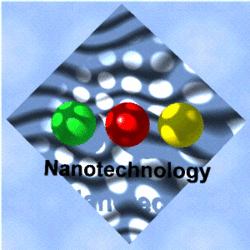
<!--
<!--<!--[if gte mso 10]> <style> /* Style Definitions */ table.MsoNormalTable {mso-style-name:"جدول عادي"; mso-tstyle-rowband-size:0; mso-tstyle-colband-size:0; mso-style-noshow:yes; mso-style-parent:""; mso-padding-alt:0cm 5.4pt 0cm 5.4pt; mso-para-margin:0cm; mso-para-margin-bottom:.0001pt; mso-pagination:widow-orphan; font-size:10.0pt; font-family:"Times New Roman"; mso-ansi-language:#0400; mso-fareast-language:#0400; mso-bidi-language:#0400;} </style> <![endif]-->
إيران تخترع فلتر بالنانوتكنولوجى لمكافحة الفطر بالمزرعه السمكية
Iranian Nanotech filter for farmed fish from fungus
محمد شهاب
فلننظر ماذا تفعل إيران من الاختراعات فائقة التكنولوجيا في المزارع السمكية، و منها ما ذكر في المقالة التالية عن نوع من فلاتر المياه مصنوعة بتكنولوجيا النانو (فلتر من الفضة الغروية مصنعه بتكنولوجيا النانو، و الذي سيحل محل فلاتر نانو بلاستيكية داخل تانك تربية الأسماك و الأخيرة تكون سامة لها). و اليكم نص المقالة:
Iranian scientists have coated a water filter with silver nanoparticles to prevent fungal infections in fish farmed indoors, in a step that they say could replace the direct release of nanoparticles into tanks — a process they have found is toxic to young rainbow trout.The filter was developed following a study published in the Iranian Journal of Fisheries Sciences, which concluded that the direct application of 'colloidal silver' nanoparticles should no longer be allowed for fish, not least for rainbow trout, for which Iran is the world's largest producer.
"We believe that the direct release of colloidal nanoparticles into the environment, especially in the aquaculture industry, must be prohibited," Mohammad Reza Kalbassi, associate professor of aquaculturebiotechnology at Tarbiat Modares University, Iran, and co-author of the study, tells SciDev.Net. "However, indirect use in a filter or via other instruments after scientific consideration may improve [the aquaculture] industry in future". The use of the new filter, made from nanosilver-coated minerals commonly used as commercial adsorbents, increased the survival rate of rainbow trout when compared with the control, Kalbassi says.
"In contrast to the control group, where around six per cent of fish had an infection caused by the fungusSaprolegnia, no infections were observed during the incubation period in the incubators containing nanosilver-coated filters," he adds. According to Kalbassi, the filter has been patented in Iran and details of its development will be published soon."I think that the silver nanoparticle filter has great potential for aquaculture," says Irina Blinova, senior scientist at the laboratory of environmental toxicology, National Institute of Chemical Physics and Biophysics, Estonia.
But she points out that silver nanoparticles are toxic and their adsorption depends on factors such as time and the chemical composition of water. She recommends more research on the long-term effects of treated water on both the target fungi and aquatic species such as fish before the filter is used commercially. Graeme Batley, chief research scientist at the catchment chemistry and ecotoxicology programme at Australia's Commonwealth Scientific and Industrial Research Organisation, adds: "The first challenge to the filter system is to contain the nanoparticles without loss as the water is passed through." Batley says the passage of water is likely to cause a continuing release of low concentrations of ionic silver, whichmay lead to a "build-up of ionic silver that could become toxic with time".
يمكن متابعة أخر أخبار المزارع السمكية و السمك و الدخول في حوار مع أفراد مجموعة (المزارع السمكية Aquacultures)على الفيس بوك :
http://www.facebook.com/groups/210540498958655/


ساحة النقاش